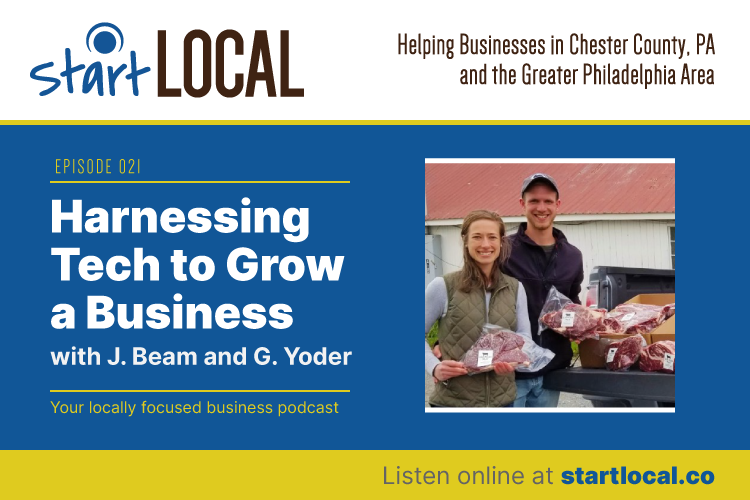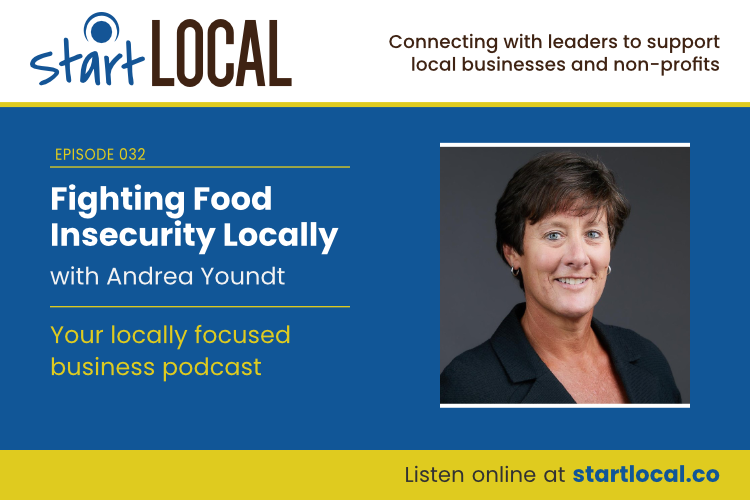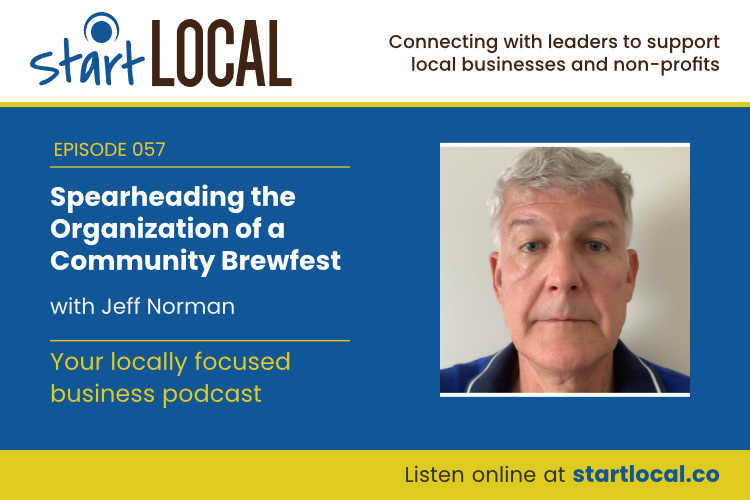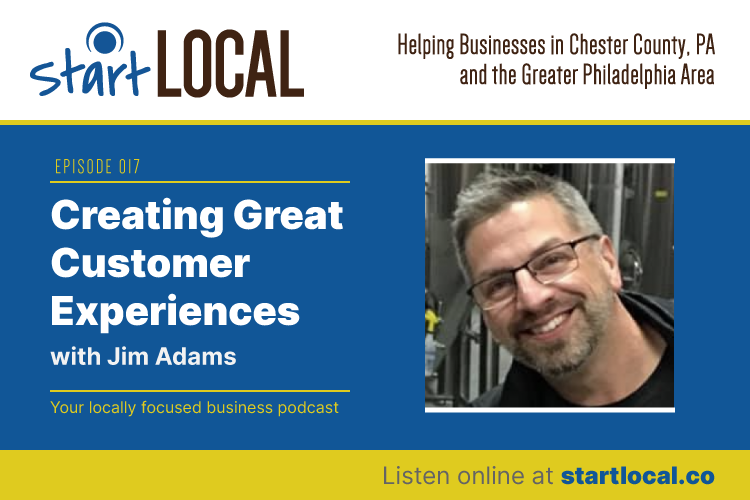
Podcast published: October 9, 2020
Chester County boasts an amazingly diverse economy with strong, vibrant businesses ranging from pharma and medical technology to manufacturing, and from world class professional services to farming. We sat down with Joy Beam and Gareth Yoder of Cedar Meadow Meats to hear how they are harnessing technology to pivot their beef farm to a COVID-19 economy.
Links
- Cedar Meadow Meats website
- Facebook: facebook.com/CedarMeadowMeats
- Penn State Berks TestLab
- National Cattlemen’s Beef Association
Notes
How did you start your business?
- Joy’s grandfather started the farm back in the 1950s with beef and pork.
- The backstory to Cedar Meadow Meats is interesting: Gareth and Joy had an idea to predict the health of cattle based on real time sensor information which would collect data to be fed into an algorithm.
- They strapped a smartphone around the neck of one of the steers to track movements – and discovered that the concept was worthy of further exploration.
- So, Joy and Gareth created a business plan and worked with Penn State Berks to pursue the idea.
- They secured grant funding to conduct a client discovery study.
- As they explored the product idea, their research revealed that that the hardware development would be costly and time consuming.
- At an industry conference in February 2019, they had two realizations:
- There were already well-funded companies and organizations pursuing the smart data product idea for managing the health of a herd.
- Consumers were increasingly eager to know the provenance of their food: farm-to-table is a growing industry.
- Those two understandings encouraged Joy and Gareth to pivot their business model.
- Gareth built a website around that concept in late February/early March.
How did you pivot to a direct-to-consumer sales of beef?
- The company booked slots with local butchers to prepare a number of steers for Spring 2020.
- The challenge of wholesale beef sales is that it’s an all-or-nothing business: it’s not possible to butch 1/2 a steer. So, Joy and Gareth had to figure out how to sell the entire animal or risk losing money.
- They started marketing on Facebook with a video about the new product.
- Sales started locally with friends and family; after the sale of its first steer, COVID-19 hit.
- Joy placed a big sign out front of the farm with “Beef” in big letters and the business phone number. That drew interest to the site.
- Local word of mouth. Sold first quarter to family friend. Selling rest of it was harder.
- Joy created a sign that said, “BEEF” + phone number that did a world of difference. People called and then went to website
How did you manage running the business as you got started?
- Between the video on Facebook and the sign on the farm property, word of mouth referrals began to build interest in the direct-to-consumer steers.
- When potential customers called the business phone, Joy and Gareth used a Google Sheet (spreadsheet) to capture data like the customer’s name, phone number, and where that customer was in the buying decision process.
- Joy and Gareth use Google Docs and text messaging with each other to run the business.
- Financial details are recorded in a shared Google Sheet.
How are you handling payments for your products?
- Currently, Cedar Meadow Meats avoids credit card payments to avoid service fees.
- Cedar Meadow Meats accepts Venmo (personal), PayPal (linked up with business email), check, or cash.
What are your plans for further growth?
- Gareth and Joy will spend the winter months planning for the future – an e-commerce site might be on the horizon.
- They will survey existing customers during the off-selling season to better understand their customers needs and wishes.
- The current setup of the business is very informal, but as the idea proves successful, Joy and Gareth plan to iterate on their approach.
- For the meat industry, summer is a busy period.
- They hope to use Christmas as a marketing strategy – filling a loved one’s freezer with locally grown beef is a wonderful gift idea.
- One misconception for consumers: US is known for premium beef on the world market; however the best meat products are sold overseas. At our grocery stores, we get a stepped down quality beef, so buying directly from farmers is a great way to get the best meat.
- Customers can choose their own cutting instructions for how the beef is to be butchered.



